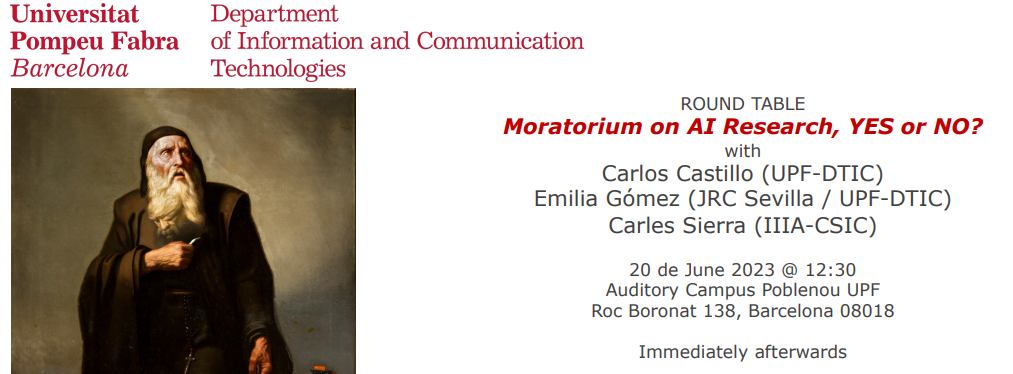The second Maria de Maeztu Strategic Research Program (CEX2021-001195-M) of the Department of Information and Communication Technologies (DTIC) takes place between 2023 and 2026. The website for this program is under construction. You can find some details in this news.
The first María de Maeztu Strategic Research Program (MDM-2015-0502) took place between January 2016 and June 2020. It was focused on data-driven knowledge extraction, boosting synergistic research initiatives across our different research areas.
Dias, GM, Bellalta B, Oechsner S. The impact of dual prediction schemes on the reduction of the number of transmissions in sensor networks. Computer Communications
Dias, GM, Bellalta B, Oechsner S. The impact of dual prediction schemes on the reduction of the number of transmissions in sensor networks. Computer Communications.
Future Internet of Things (IoT) applications will require that billions of wireless devices transmit data to the cloud frequently. However, the wireless medium access is pointed as a problem for the next generations of wireless networks; hence, the number of data transmissions in Wireless Sensor Networks (WSNs) can quickly become a bottleneck, disrupting the exponential growth in the number of interconnected devices, sensors, and amount of produced data. Therefore, keeping a low number of data transmissions is critical to incorporate new sensor nodes and measure a great variety of parameters in future generations of WSNs. Thanks to the high accuracy and low complexity of state-of-the-art forecasting algorithms, Dual Prediction Schemes (DPSs) are potential candidates to optimize the data transmissions in WSNs at the finest level because they facilitate for sensor nodes to avoid unnecessary transmissions without affecting the quality of their measurements. In this work, we present a sensor network model that uses statistical theorems to describe the expected impact of DPSs and data aggregation in WSNs. We aim to provide a foundation for future works by characterizing the theoretical gains of processing data in sensors and conditioning its transmission to the predictions’ accuracy. Our simulation results show that the number of transmissions can be reduced by almost 98% in the sensor nodes with the highest workload. We also detail the impact of predicting and aggregating transmissions according to the parameters that can be observed in common scenarios, such as sensor nodes’ transmission ranges, the correlation between measurements of different sensors, and the period between two consecutive measurements in a sensor.
Additional material:
Related Assets
Department of Information and Communication Technologies, UPF
Grant CEX2021-001195-M funded by MCIN/AEI /10.13039/501100011033


Department of Information and Communication Technologies, UPF
- Àngel Lozano - Scientific director
- Aurelio Ruiz - Program management




